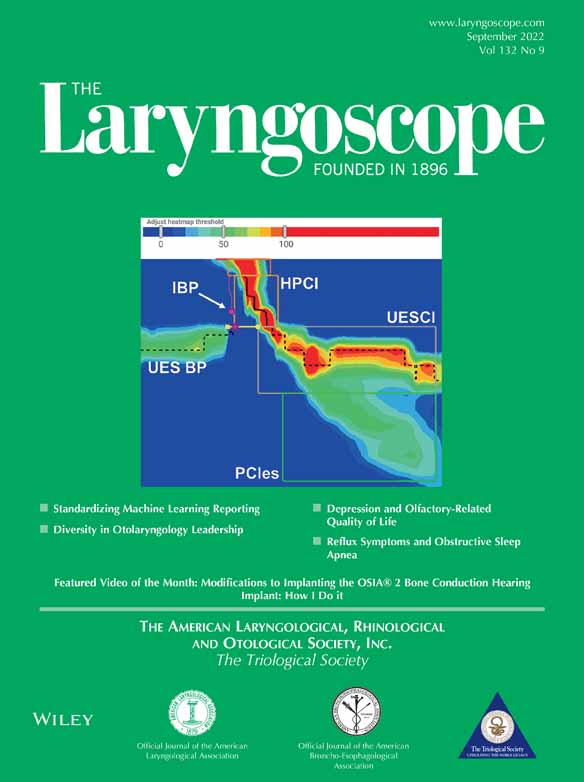Severe Versus Very Severe Pediatric Obstructive Sleep Apnea Outcomes After Adenotonsillectomy
Editor's Note: This Manuscript was accepted for publication on October 12, 2021.
The authors have no funding, financial relationships, or conflicts of interest to disclose.
Abstract
Objectives/Hypothesis
Adenotonsillectomy (AT) is generally considered the first line treatment for pediatric patients with obstructive sleep apnea (OSA). Pediatric patients with severe OSA have worse outcomes after AT than patients with milder OSA. It is currently unclear if this group of higher morbidity patients should be subdivided further. This study investigates patients with severe pediatric OSA to determine if there are differences in postsurgical outcomes based on initial severity of sleep disordered breathing, medical comorbidities, or demographic factors.
Study Design
Retrospective cohort study at a single tertiary referral center.
Methods
Patients aged 2–18 who underwent polysomnogram (PSG) from October 2012 to January 2019, had an apnea-hypopnea index (AHI) >10, and subsequently underwent AT were identified using a filter through electronic medical record. A total of 112 patients underwent both pre- and postoperative PSG. Bivariate analysis was conducted via Pearson chi-square test. Univariate and multivariate analyses via binary logistic and multinomial linear regressions were performed using SPSS.
Results
Of the 112 patients included in this study, 68 patients were identified as having severe OSA (AHI = 10–20) and 44 as having very severe OSA (AHI > 20). Very severe OSA patients were significantly less likely to be cured of sleep disordered breathing or have their OSA reduced to mild OSA. Obese patients were found to have less reduction in AHI after AT.
Conclusions
The postsurgical outcomes of patients with severe and very severe OSA are significantly different indicating that patients traditionally categorized as having severe OSA may need to be further subcategorized.
Level of Evidence
4 Laryngoscope, 132:1855–1860, 2022




